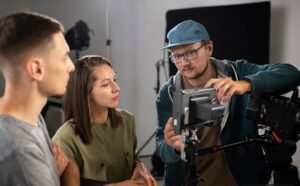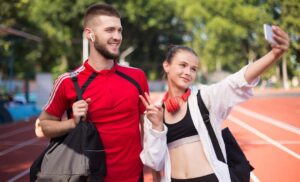I’m here to chat about Sports, Exercise and Health Science IA Topics for Practical Investigation. When I started planning my project, I was surprised by how many sports, exercise and health science ia ideas were floating around. I spent hours scrolling through different lists and forums, jotting down potential projects that caught my eye.
I found myself looking at a mix of sports, exercise and health science ia topics and some cool ib sports, exercise and health science ia ideas that really matched what I was curious about.
I even came across a bunch of sports, exercise and health science ia questions that made me pause and think, “Is this something I can actually measure or observe?” What really got me going was finding some easy sports, exercise and health science ia ideas that weren’t too overwhelming to start with, while also peeking at a few ib sports, exercise and health science ia examples that showed how others connected their research with practical experiments.
I loved mixing up different ia ideas sports, exercise and health science and seeing how each one could be turned into a hands-on investigation. I remember how one particular set of sports, exercise and health science ia research questions made me rethink how I could apply what I already knew in a way that was both fun and scientific.
Even the hl sports, exercise and health science ia ideas I spotted added that extra twist to my project, pushing me to set up experiments that were both creative and data-driven.
IB SEHS IA Topics for Practical Investigation
This whole process really made me realize that there isn’t just one right way to choose your topic—it’s all about finding what clicks with you and the kind of data you can actually gather. Whether you’re leaning toward a straightforward approach or trying out something a bit more complex, there’s plenty of room to experiment and build something that’s totally your own.
Each topic includes three research questions (RQs) along with a brief overview of how students might plan their investigation, collect data, and analyze their findings in line with IB criteria.
1. The Effect of Warm-Up Protocols on Sprint Performance
- RQ1: How does a dynamic warm-up compare to a static warm-up in enhancing 30-meter sprint times?
Overview: Design an experiment where athletes perform either a dynamic or static warm-up before sprint tests. Record sprint times and analyze the differences using paired statistical tests. - RQ2: To what extent does warm-up duration influence lower-body explosive power in sprinting?
Overview: Vary warm-up durations (e.g., 5, 10, 15 minutes) and measure explosive power using vertical jump or sprint performance tests, then compare results. - RQ3: How does the inclusion of sport-specific movements in a warm-up affect agility performance?
Overview: Compare agility test scores (e.g., T-test or shuttle run) between warm-ups with general versus sport-specific drills, discussing neuromuscular activation and specificity.
2. Hydration and Its Impact on Exercise Performance
- RQ1: How does dehydration affect endurance performance during a timed treadmill run?
Overview: Measure performance (distance covered/time) in athletes under controlled hydration and dehydration conditions, ensuring ethical hydration protocols. - RQ2: To what extent does pre-exercise hydration level influence heart rate recovery after high-intensity exercise?
Overview: Record heart rate recovery in athletes after exercise trials with varied pre-hydration statuses and analyze recovery curves. - RQ3: How does electrolyte supplementation during exercise affect perceived exertion and performance?
Overview: Compare subjective ratings (RPE scales) and performance metrics between trials with and without electrolyte drinks during endurance exercise.
3. Effects of Carbohydrate Supplementation on Performance
- RQ1: How does carbohydrate ingestion before exercise impact time-to-exhaustion during a high-intensity run?
Overview: Conduct trials where athletes consume a carbohydrate drink versus a placebo before exercise, measuring time-to-exhaustion. - RQ2: To what extent does carbohydrate supplementation during prolonged exercise affect blood glucose levels and performance?
Overview: Monitor blood glucose and performance (distance or time) in athletes during prolonged exercise sessions with and without carbohydrate intake. - RQ3: How do different types of carbohydrates (e.g., glucose vs. fructose) influence exercise performance and perceived exertion?
Overview: Compare performance outcomes and RPE scores when athletes ingest different carbohydrate sources prior to exercise.
4. Impact of Stretching Techniques on Flexibility and Injury Prevention
- RQ1: How does static stretching compare to dynamic stretching in improving hamstring flexibility?
Overview: Measure flexibility using tests like the sit-and-reach before and after different stretching protocols, analyzing changes with statistical tests. - RQ2: To what extent does pre-exercise static stretching affect subsequent muscle performance in explosive movements?
Overview: Compare performance in power tests (e.g., vertical jump) following static stretching versus a control (no stretching) condition. - RQ3: How does regular flexibility training influence the incidence of muscle strains in recreational athletes over a training period?
Overview: Track injury incidence and flexibility improvements over several weeks in groups following different stretching routines.
5. Influence of Sleep Quality on Athletic Performance
- RQ1: How does a night of sleep deprivation affect sprint performance and reaction time in athletes?
Overview: Compare sprint times and reaction test scores between athletes following a normal night’s sleep and a sleep-restricted night. - RQ2: To what extent does sleep quality correlate with performance in endurance exercises?
Overview: Use sleep quality questionnaires (e.g., PSQI) and correlate scores with endurance test results (e.g., time-to-exhaustion). - RQ3: How do changes in sleep duration over a training period impact overall athletic performance and recovery?
Overview: Monitor athletes’ sleep patterns and performance metrics across several weeks, using regression analysis to identify trends.
6. Effects of Music on Exercise Performance and Perception
- RQ1: How does listening to music during exercise affect perceived exertion and performance in a cycling task?
Overview: Compare performance and RPE in athletes cycling with and without music, analyzing differences in endurance and subjective effort. - RQ2: To what extent does music tempo influence the pace and performance of a running workout?
Overview: Conduct trials where participants run with music at different tempos and measure pace consistency and performance. - RQ3: How does the genre of music affect motivation and performance during high-intensity interval training?
Overview: Compare performance metrics and motivational scores between trials using different music genres during HIIT sessions.
7. Biomechanics of Sprinting Technique
- RQ1: How do variations in stride length correlate with 100-meter sprint performance?
Overview: Record athletes’ sprint trials using video analysis, measure stride lengths, and perform correlation analyses with sprint times. - RQ2: To what extent does knee joint angle at ground contact influence acceleration in sprinting?
Overview: Use motion analysis software to measure knee angles during sprint starts and correlate with initial acceleration performance. - RQ3: How do differences in foot strike patterns affect running economy in sprint events?
Overview: Analyze foot strike patterns via high-speed video and compare energy expenditure or performance outcomes between patterns.
8. Impact of Resistance Training on Muscular Strength
- RQ1: How does a 6-week resistance training program affect upper body strength in recreational athletes?
Overview: Measure baseline and post-training strength (e.g., bench press 1RM), comparing improvements using paired statistical analyses. - RQ2: To what extent does training frequency (2 vs. 4 sessions per week) influence gains in muscular strength?
Overview: Compare strength improvements in groups with different training frequencies over the same period. - RQ3: How does the inclusion of compound versus isolation exercises affect overall strength development?
Overview: Design a training intervention with different exercise types and assess strength gains using standardized strength tests.
9. Effects of High-Intensity Interval Training (HIIT) on Cardiovascular Fitness
- RQ1: How does an 8-week HIIT program impact VO₂ max in sedentary individuals?
Overview: Measure VO₂ max before and after the HIIT intervention, using standardized testing protocols and comparing changes statistically. - RQ2: To what extent does HIIT improve heart rate recovery compared to moderate-intensity continuous training (MICT)?
Overview: Compare heart rate recovery data between two groups following HIIT and MICT protocols, analyzing differences with appropriate tests. - RQ3: How does the intensity of HIIT sessions affect perceived exertion and subsequent cardiovascular improvements?
Overview: Analyze RPE scores and cardiovascular data (e.g., resting heart rate) across different HIIT intensities to determine optimal training levels.
10. The Impact of Core Stability Training on Balance and Performance
- RQ1: How does a core stability training program affect static balance in athletes?
Overview: Assess balance using standardized tests (e.g., single-leg stance) before and after a core training intervention. - RQ2: To what extent does improved core strength influence performance in dynamic balance tasks?
Overview: Compare dynamic balance test results (e.g., Y-Balance test) with core strength measurements pre- and post-intervention. - RQ3: How does core stability training affect the risk of lower back injuries in athletes?
Overview: Monitor core strength, balance, and self-reported lower back discomfort over a training period, discussing implications for injury prevention.
11. Influence of Pre-Exercise Nutrition on Performance
- RQ1: How does consuming a carbohydrate-rich meal before exercise impact endurance performance?
Overview: Compare endurance test results (e.g., time-to-exhaustion) after pre-exercise meals with different macronutrient compositions. - RQ2: To what extent does the timing of pre-exercise nutrition influence blood glucose levels and performance?
Overview: Measure blood glucose and performance outcomes when meals are consumed at varying intervals before exercise. - RQ3: How does a protein-rich pre-exercise snack affect perceived exertion during resistance training?
Overview: Use RPE scales to assess subjective effort in sessions preceded by protein versus carbohydrate snacks.
12. The Effect of Recovery Modalities on Post-Exercise Fatigue
- RQ1: How does active recovery compare to passive recovery in reducing post-exercise lactate levels?
Overview: Measure lactate concentrations in athletes after exercise under both active (light jogging) and passive (rest) recovery conditions. - RQ2: To what extent do cryotherapy and contrast water therapy differ in alleviating muscle soreness post-exercise?
Overview: Compare subjective soreness ratings and objective performance measures after applying each recovery method. - RQ3: How does foam rolling influence muscle recovery and subsequent performance in high-intensity exercise?
Overview: Record performance outcomes and muscle soreness scores after sessions with and without foam rolling interventions.
13. Impact of Flexibility Training on Injury Prevention
- RQ1: How does a regular stretching program affect the incidence of muscle strains in recreational athletes?
Overview: Track injury incidence over a training period in groups following a structured stretching program versus a control group. - RQ2: To what extent does increased flexibility correlate with improved joint range of motion and performance in dynamic tasks?
Overview: Measure joint ROM and performance in dynamic tests (e.g., agility drills) pre- and post-flexibility training, analyzing correlations. - RQ3: How do different stretching techniques (static vs. dynamic) influence post-exercise muscle recovery?
Overview: Compare recovery markers such as muscle soreness and flexibility improvements after sessions using different stretching protocols.
14. Effects of Mental Imagery on Athletic Performance
- RQ1: How does the use of mental imagery before competition affect sprint performance?
Overview: Conduct trials where athletes use guided mental imagery before sprints and compare performance and anxiety levels to a control group. - RQ2: To what extent does mental rehearsal improve skill execution in precision sports (e.g., archery, shooting)?
Overview: Measure performance improvements in athletes who incorporate mental rehearsal versus those who do not, using standardized accuracy tests. - RQ3: How do different durations of mental imagery practice influence perceived confidence and performance in sport-specific tasks?
Overview: Compare performance and self-reported confidence levels after varying durations of mental imagery sessions, discussing optimal practice length.
15. The Influence of Body Composition on Endurance Performance
- RQ1: How does body fat percentage correlate with endurance performance in long-distance runners?
Overview: Measure body composition using skinfolds or bioelectrical impedance and compare with endurance test results (e.g., time trials). - RQ2: To what extent does lean muscle mass influence VO₂ max values in endurance athletes?
Overview: Analyze the relationship between lean body mass and VO₂ max data collected from athletes, using regression analysis. - RQ3: How do changes in body composition over a training period affect running economy?
Overview: Track body composition changes and running economy (oxygen consumption at submaximal speeds) over several weeks, analyzing trends.
16. Effects of Altitude Training on Physiological Performance
- RQ1: How does simulated altitude exposure influence resting heart rate and oxygen saturation in athletes?
Overview: Use a hypoxic chamber or simulated altitude training sessions and measure changes in cardiovascular markers. - RQ2: To what extent does altitude training improve endurance performance in sea-level competitions?
Overview: Compare pre- and post-altitude training performance metrics (e.g., time-to-exhaustion, VO₂ max) and discuss physiological adaptations. - RQ3: How does the duration of altitude exposure correlate with improvements in red blood cell count and overall endurance?
Overview: Track hematological changes over different altitude training durations and correlate with performance enhancements.
17. The Role of Core Temperature Regulation in Exercise Performance
- RQ1: How does core temperature change during prolonged exercise in different environmental conditions?
Overview: Use ingestible thermometers or other non-invasive measures to monitor core temperature during exercise under varied ambient temperatures. - RQ2: To what extent does pre-cooling influence exercise performance and thermal comfort in hot conditions?
Overview: Compare performance outcomes and subjective thermal comfort in trials with and without pre-cooling interventions. - RQ3: How do different hydration strategies affect core temperature regulation during high-intensity exercise?
Overview: Evaluate core temperature and performance data under controlled hydration protocols, analyzing differences in thermoregulation.
18. Effects of Strength Training on Bone Mineral Density
- RQ1: How does a 12-week resistance training program affect bone mineral density (BMD) in young adults?
Overview: Use accessible methods (e.g., ultrasound or portable densitometry) to measure BMD pre- and post-intervention, analyzing changes. - RQ2: To what extent do weight-bearing exercises influence BMD compared to non-weight-bearing exercises?
Overview: Compare groups following different training regimens and assess BMD changes using standardized protocols. - RQ3: How do training frequency and intensity correlate with improvements in BMD in recreational athletes?
Overview: Analyze training logs and BMD data over time to identify optimal training parameters for bone health.
19. The Impact of Recovery Sleep on Muscular Performance
- RQ1: How does the duration of post-exercise sleep influence subsequent muscle strength and power output?
Overview: Record performance in strength tests following nights with varying sleep durations, using standardized measures and sleep diaries. - RQ2: To what extent does sleep quality correlate with recovery markers such as muscle soreness and performance?
Overview: Use subjective sleep quality questionnaires alongside performance tests to determine correlations. - RQ3: How does implementing a structured sleep regimen over several weeks impact overall athletic performance?
Overview: Monitor performance, recovery, and sleep quality over a training cycle, analyzing trends and improvements statistically.
20. Influence of Ergogenic Aids on Exercise Efficiency
- RQ1: How does caffeine ingestion before exercise affect aerobic performance and perceived exertion?
Overview: Conduct trials comparing performance and RPE in athletes after ingesting caffeine versus a placebo, analyzing differences. - RQ2: To what extent does creatine supplementation enhance performance in short-duration, high-intensity exercises?
Overview: Measure performance outcomes (e.g., repeated sprint tests) before and after a supplementation period, comparing changes. - RQ3: How do different dosages of an ergogenic aid (e.g., beta-alanine) influence exercise efficiency and fatigue resistance?
Overview: Design a dose–response study and analyze performance metrics and fatigue indicators, discussing the optimal dosage for performance enhancement.
Wrapping Up
Looking back, I found that blending a variety of sports, exercise and health science ia ideas with some well-thought-out sports, exercise and health science ia questions really made my project feel manageable and interesting.
Comparing a range of ib sports, exercise and health science ia ideas with some easy sports, exercise and health science ia ideas gave me the boost I needed to set up my experiment in a way that was both realistic and engaging. Plus, checking out a few ib sports, exercise and health science ia examples helped me understand how to frame my own research questions better.
Believe me, once you start mixing and matching these ideas, you’ll land on a project that feels uniquely yours. So, take your time, experiment with different angles, and keep an open mind as you build your investigation.









